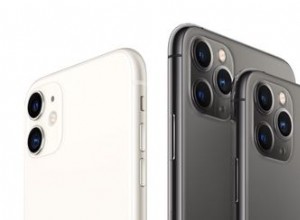اكتسبت نتيجة المروج الصافي - أو NPS - استخدامًا شائعًا عبر الصناعات. يعود الفضل في هذا الاعتماد إلى بساطة المقياس وفائدته الإجمالية. العملاء الذين شملهم الاستطلاع لديهم سؤال واحد فقط للإجابة. "على مقياس من 0 إلى 10 ، ما مدى احتمالية أن توصي صديق أو زميل بـ [اسم الشركة أو المنتج أو الخدمة]؟"
هذا كل ما في الأمر - نذهب بعيدًا!
يعتبر المستجيبون الذين أجابوا بـ 9 أو 10 من المروجين . سلبية النتائج بين 7 و 8 ، بينما الدرجات من 0 إلى 6 تشير إلى المنتقصين . تنشر المجموعة الأولى معلومات إيجابية عن شركتك. غالبًا ما تحذر المجموعة الثالثة الناس بالابتعاد. يؤدي طرح النسبة المئوية للمنتقدين والسلبيين من النسبة المئوية للمروجين إلى إنتاج NPS الخاص بك. يتم طرح 10 ٪ من المنتقدين من 40 ٪ من المروجين ينتج NPS قدره 30.
تستخدم الشركات النظام عبر أي جانب من جوانب مؤسساتها أيضًا. يمكنك قياس NPS للمستهلكين للمنتجات الفردية أو تجربة خدمة العملاء أو حتى رضا الموظفين بسهولة وإيجاز.
كلمة تحذير: تختلف الدرجات باختلاف الصناعات والإدارات. على الرغم من أن الدرجة 20 قد تكون منخفضة جدًا في منطقة ما ، إلا أنها قد تكون جديرة بالثناء في منطقة أخرى. يمكن أن تؤدي مقارنة النتائج عبر الصناعات إلى تضليل المديرين ورجال الأعمال. استخدم NPS للبحث عن مجالات التحسين في المناطق الضعيفة أو مزيد من التركيز على العروض القوية. يمكنك حتى استخدام الاستطلاع كفرصة لمزيد من المشاركة المباشرة مثل متابعة المكالمات المباشرة أو رسائل البريد الإلكتروني أو عروض المنتجات.
إذن ما الذي يجعل صافي المروج نتيجة جيدة؟
منتجات وخدمات عالية الجودة
واضح جدا؟ بالنسبة للعديد من المديرين ورجال الأعمال ، تعد NPS السلبية بمثابة دعوة للاستيقاظ لإعادة التفكير في الجودة الشاملة. Just because you heard very few complaints does not mean customers were happy. You may have hundreds of detractors spreading the word of unpleasant experiences and not even know it.
Commit to a philosophy of constant and never-ending improvement. A negative or declining NPS may feel overwhelming. Take it as an opportunity to find out specifically where your products or services do not meet client expectations.
Properly Segmented Marketing
Suppose a customer purchases a high-end cashmere sweater from your online boutique. She loves it and makes other higher-end purchases. As a thank you, you email her a coupon for $20 shoes on sale for $15. She purchases them and what she receives is… a pair of $20 shoes. They’re about what you’d expect:lower quality, and the stitches are coming undone after a couple months. She’s taken aback after the quality she’s come to expect. You may have just turned a promoter into a detractor.
Whether it’s clothing, appliances or electronics, people naturally expect different levels of quality at different prices. But after building a reputation, marketing a product intended for a different segment can have deleterious results. Narrow your niche and find your uniqueness. Avoid not meeting previously developed expectations by marketing to the wrong segment.
Strong Digital User Experience
Your website, social media or app likely serve as your potential customer’s first experience with your business. They are your storefront. As with a physical store, it should be attractive, clean and easy to browse while also providing options for exploration. It must also—increasingly and by law—be accessible to those with physical or cognitive disabilities.
And if that seems like a lot, it must also cater to consumers who prefer self-service. Although SMS, email or a pop-up assistant/live chat provide value on your digital page, many consumers prefer to browse and learn on their own. Be sure to include a FAQ page based on the questions your clients ask most.
This all may seem a very tall order. But this is your business, your livelihood and your dream. A strong website or app is worth paying for and fosters sales and promoters.
Fast Follow-ups to Inquiries
No one likes waiting. We have become accustomed to instant responses from friends, family and colleagues. Customers expect no less. You wouldn’t wait until 5 p.m. to respond to your brother’s text to meet for lunch. The moment has passed, and moments pass even faster for potential clients.
Long waits for a business response can quickly antagonize a potential or existing customer and flip them into a detractor. If you have an option for email inquiries, those messages should be treated with the same urgency as a phone call or text.
Team Commitment to NPS
Committing your team to improved NPSs can take work. In fact, an inappropriate approach will create more damage than good. Rewarding the sales department for a higher score than the support team may seem like a good, competitive approach to achieve short-term results. Instead, you will sew division, increase silos and no longer operate uniformly. Rather, focus on a continual improvement.
Instead, nurture a culture of exceeding customer expectations. Net promoter scores serve as a measure of improvement as a percentage. Digital support moving from 15 to 30 NPS likely means more than sales moving from 20 to 22 NPS. The idea is not competition, but rather, overall improvement at every step of the way among a cohesive, cross-functional team.
Improving Your NPS
Tackling each of the above steps will help you obtain a good NPS. But the NPS itself does not tell you exactly what you have done right or what you have missed. You know the good and the bad—but not the why and how. That is why it is important to close the loop with your clients.
Followup is critical toward understanding what your clients love about your offerings. And also their pain points. Some clients may drastically lower your average and give you a 2 even though they loved your products and services overall. All it takes is one glitch to spoil the customer experience. Follow up with a personal call or email. Ask what they did or did not like, and what you can improve.
Within the survey itself, provide an option for an open-ended followup question to hear the customer voice. These are easy to tailor-based on the client NPS. For instance, ask promoters, “What did you like most about your experience?” A passive may simply be asked, “What can we improve?” A detractor may be asked, “What disappointed you about your experience with us?” Each of these should provide some insight to the customer experience.
Continual, courteous and caring engagement with clients matters most. But such open-ended questions will give you quick insight into both what is working and what to improve.
Photo by @Tonefotografia/Twenty20






